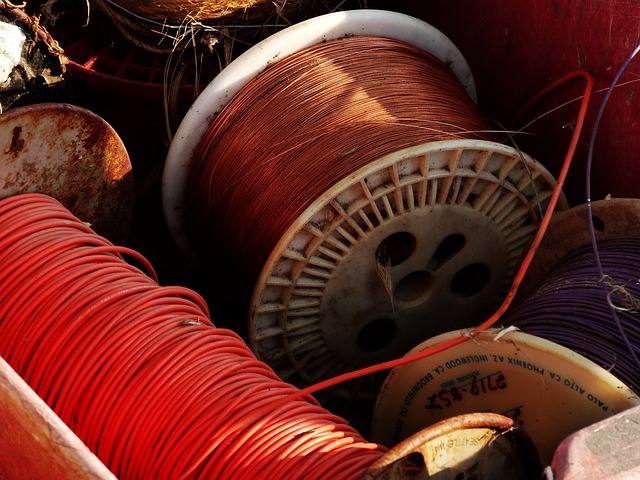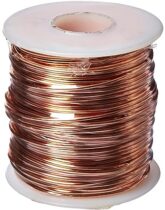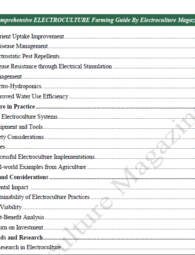Welcome to Electroculture Magazine, your premier source for all things electrifying in the realm of agriculture! In this exciting blog post, we delve into the practical side of electroculture with a guide on “How to Use an Electroculture Kit?” Whether you’re a novice enthusiast or a seasoned farmer, we’ve got you covered. Join us as we unlock the secrets to harnessing the power of electricity in your farming practices.
From setting up your kit and understanding the components to implementing effective techniques, we’ll provide you with step-by-step instructions and valuable tips. Get ready to embark on an electrifying journey of enhanced crop growth and sustainable farming methods. Let’s electrify your agricultural endeavors together!
What is an Electroculture Kit?
A full system with all the elements required to use electroculture in agriculture is known as an electroculture kit. Electrodes, wiring, a control unit, and an electric generator are frequently present. Using electrodes, a low-frequency electric field generated by the electric generator is applied to the crops. The control unit, which controls the frequency and strength of the electric field, is connected to the electrodes through the wiring.
Features of an Electroculture Kit
- Electric Generator
The electric generator is the heart of the electroculture kit. It produces a low-frequency electric field, which stimulates plant growth and enhances crop yield. The generator is typically powered by an AC power source and can be portable or stationary. Portable generators are ideal for small-scale farming or for use in greenhouse environments. Stationary generators are suitable for larger farms and can be used to electrify entire fields.
- Electrodes
The electrodes are the components that deliver the electric field to the crops. They can be made of different materials such as copper, aluminum, or stainless steel. The electrodes can be placed in the soil, suspended above the crops, or attached to the irrigation system. The electrodes’ positioning and spacing can vary depending on the crops and the desired results.
- Wiring
The wiring is the component that connects the electrodes to the control unit. It is essential to ensure that the wiring is of high quality and properly insulated to prevent electric shock hazards. The wiring can be buried underground or placed above ground, depending on the farming environment.
- Control Unit
The control unit is the brain of the electroculture kit. It regulates the electric field’s intensity and frequency, ensuring that the crops receive the optimal stimulation. The control unit can be manually or automatically controlled. Automatic control units are more convenient as they can adjust the electric field according to the crops’ growth stage and environmental conditions.
Benefits of an Electroculture Kit
- Increased Crop Yield
Electroculture has been shown to increase crop yield significantly. The low-frequency electric field stimulates the plant’s growth by enhancing the absorption of nutrients and water, improving photosynthesis, and increasing root development. This results in higher yields, improved crop quality, and a faster harvest.
- Reduced Fertilizer and Pesticide Use
Electroculture can reduce the need for synthetic fertilizers and pesticides. The low-frequency electric field can improve the plants’ nutrient uptake and strengthen their natural defense mechanisms against pests and diseases. This leads to a reduction in the use of synthetic chemicals, making electroculture an eco-friendly and sustainable solution.
- Lower Operating Costs
Electroculture can lower operating costs for farmers. By reducing the use of synthetic fertilizers and pesticides, farmers can save money on chemical inputs. Additionally, electroculture does not require expensive equipment or machinery, making it a cost-effective solution for small-scale farmers.
- Improved Soil Health
Electroculture can improve soil health by promoting microbial activity and increasing soil fertility. The low-frequency electric field can stimulate soil microorganisms, which help break down organic matter and release nutrients into the soil. This leads to improved soil structure, better water retention, and enhanced soil fertility.
How to use an electroculture kit
To use an electroculture kit, simply follow the instructions that come with the kit. Most kits will include a power source, electrodes, and a controller. The power source is used to generate the electrical current, the electrodes are inserted into the soil, and the controller is used to adjust the current.
The amount of current that you use will depend on the type of plants that you are growing. For most plants, a current of 1-2 milliamps is sufficient. You can increase the current if you are growing plants that are particularly sensitive to electricity, such as tomatoes.
How often should you use electroculture?
You can use electroculture as often as you like, but it is generally recommended that you use it once a week. If you are using electroculture for the first time, you may want to start by using it less frequently and then increase the frequency as you see results.
Where can I buy an electroculture kit?
Electroculture kits are available for purchase online and at some garden centers. The cost of a kit will vary depending on the features that it includes.

Additional Information
Types of electroculture kits
There are a variety of electroculture kits available on the market, each with its own set of features. Some kits are designed for indoor use, while others are designed for outdoor use. Some kits are simple to use, while others require more technical knowledge.
Choosing an electroculture kit
When choosing an electroculture kit, it is important to consider the following factors:
- The type of plants that you will be growing
- The size of your garden
- Your budget
- Your technical expertise
Using an electroculture kit safely
When using an electroculture kit, it is important to follow the following safety precautions:
- Always read and follow the instructions that come with the kit.
- Do not use the kit if it is damaged.
- Keep the kit out of the reach of children.
- Do not use the kit in wet or humid conditions.
- Do not use the kit near flammable materials.
Troubleshooting
If you are having problems with your electroculture kit, the following troubleshooting tips may help:
- Check the power source to make sure that it is turned on.
- Check the electrodes to make sure that they are inserted into the soil properly.
- Check the controller to make sure that the settings are correct.
- If you are still having problems, contact the manufacturer of the kit for assistance.
Read More About Electroculture Tools..
Conclusion
Electroculture is a safe and effective way to improve plant growth. If you are looking for a way to get more out of your garden, then electroculture is a method that you should consider. Using an electroculture kit can enhance crop yield and reduce the use of synthetic fertilizers and pesticides. The process involves choosing the right location, installing the electrodes, connecting the electrodes to the wiring and control unit, turning on the electric generator, and monitoring the crops regularly. With the proper use and monitoring, electroculture can provide a sustainable solution for agriculture.











